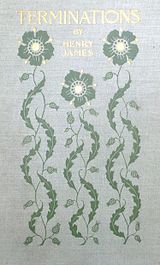
Sense and Sensibility is a novel by Jane Austen, published in 1811. It was published anonymously; By A Lady appears on the title page where the author's name might have been. It tells the story of the Dashwood sisters, Elinor and Marianne as they come of age. They have an older half-brother, John, and a younger sister, Margaret.

The Personal History, Adventures, Experience and Observation of David Copperfield the Younger of Blunderstone Rookery , commonly known as David Copperfield, is a novel in the bildungsroman genre by Charles Dickens, narrated by the eponymous David Copperfield, detailing his adventures in his journey from infancy to maturity. It was first published as a serial in 1849–50, and as a book in 1850.

The History of Tom Jones, a Foundling, often known simply as Tom Jones, is a comic novel by English playwright and novelist Henry Fielding. It is a Bildungsroman and a picaresque novel. It was first published on 28 February 1749 in London and is among the earliest English works to be classified as a novel. It is the earliest novel mentioned by W. Somerset Maugham in his 1948 book Great Novelists and Their Novels among the ten best novels of the world.
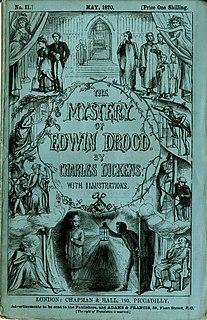
The Mystery of Edwin Drood is the final novel by Charles Dickens, originally published in 1870.
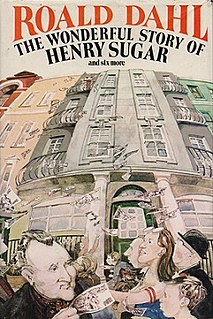
The Wonderful Story of Henry Sugar and Six More is a collection of seven short stories written by Roald Dahl. They are generally regarded as being aimed at a slightly older audience than many of his other children's books.

The Herbs is a television series for young children made for the BBC by Graham Clutterbuck's FilmFair company. It was written by Michael Bond, directed by Ivor Wood using 3D stop motion model animation and first transmitted from 12 February 1968 in the BBC1 Watch with Mother timeslot. There were 13 episodes in the series, each one 15 minutes long.

Crome Yellow is the first novel by British author Aldous Huxley, published by Chatto & Windus in 1921, followed by a U.S. edition by George H. Doran Company in 1922. Though a social satire of its time, it is still appreciated and has been adapted to different media.

Interpreter of Maladies is a book collection of nine short stories by American author of Indian origin Jhumpa Lahiri published in 1999. It won the Pulitzer Prize for Fiction and the Hemingway Foundation/PEN Award in the year 2000 and has sold over 15 million copies worldwide. It was also chosen as The New Yorker's Best Debut of the Year and is on Oprah Winfrey's Top Ten Book List.

Tales of St. Austin's is a collection of short stories and essays, all with a school theme, by P. G. Wodehouse. It was first published on 10 November 1903 by Adam & Charles Black, London, all except one item having previously appeared in the schoolboy magazines, The Captain and Public School Magazine.

The Aspern Papers is a novella by American writer Henry James, originally published in The Atlantic Monthly in 1888, with its first book publication later in the same year. One of James's best-known and most acclaimed longer tales, The Aspern Papers is based on the letters Percy Bysshe Shelley wrote to Mary Shelley's stepsister, Claire Clairmont, who saved them until she died. Set in Venice, The Aspern Papers demonstrates James's ability to generate suspense while never neglecting the development of his characters.
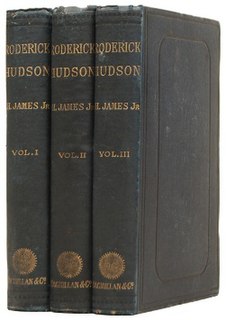
Roderick Hudson is a novel by Henry James. Originally published in 1875 as a serial in The Atlantic Monthly, it is a bildungsroman that traces the development of the title character, a sculptor.

What Maisie Knew is a novel by Henry James, first published as a serial in The Chap-Book and in the New Review in 1897 and then as a book later that year. It tells the story of the sensitive daughter of divorced, irresponsible and narcissistic parents. The book follows the title character from earliest childhood to precocious maturity.
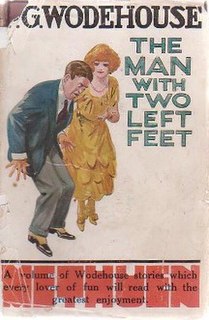
The Man with Two Left Feet, and Other Stories is a collection of short stories by British author P. G. Wodehouse, first published in the UK on 8 March 1917 by Methuen & Co., London, and in the US on 1 February 1933 by A. L. Burt and Co., New York. All the stories had previously appeared in periodicals, usually The Strand Magazine in the United Kingdom and The Red Book Magazine or The Saturday Evening Post in the United States.
The Author of Beltraffio is a short story by Henry James, first published in the English Illustrated Magazine in 1884. This macabre account of desperate family infighting eventually leads to a tragic conclusion. Although the father in the story is a novelist, the tale concentrates far more on his family relationships than on his special concerns as a writer, though some of those concerns affect the outcome.

"The Real Thing" is a short story by Henry James, first syndicated by S. S. McClure in multiple American newspapers and then published in the British publication Black and White in April 1892 and the following year as the title story in the collection, The Real Thing and Other Stories published by Macmillan. This story, often read as a parable, plays with the reality-illusion dichotomy that fascinated James, especially in the later stages of his career. For the illustrator who narrates the story, the genuine article proves all too useless for his commercial purposes. The story portrays the unfortunate victims of a society in which reality and representation are closely intertwined in ways that make art a difficult project to disentangle the two.

"First Aid for Dora" is a short story by P. G. Wodehouse, which first appeared in the United States in the July 1923 issue of Cosmopolitan and in the United Kingdom in the August 1923 Strand. It features the irrepressible Stanley Featherstonehaugh Ukridge, and was included in the collection Ukridge, published in 1924.

David Copperfield is a two-part BBC television drama adaptation of Charles Dickens's 1850 novel of the same name, adapted by Adrian Hodges. The first part was shown on Christmas Day 1999 and the second on Boxing Day the same year.

"The Next Time" is an 1895 short story by Henry James.
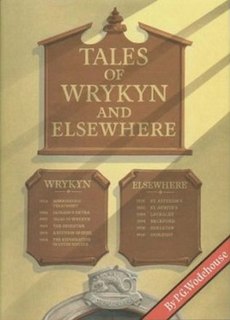
Tales of Wrykyn and Elsewhere is a collection of short stories by British writer P. G. Wodehouse, first published on 1 October 1997 by Porpoise Books, London, with illustrations by T. M. R. Whitwell. It contains previously uncollected work, most of the stories having first appeared in the schoolboy's magazines such as The Captain and Public School Magazine. It was reprinted by Penguin Random House under its Everyman's Library imprint in 2014.

"Glasses" is an 1896 short story by Henry James. A young woman whose only asset is a supremely beautiful face is about to make a society marriage. That is, until her fiancé discovers that, being virtually blind, she needs thick glasses which ruin her looks.
